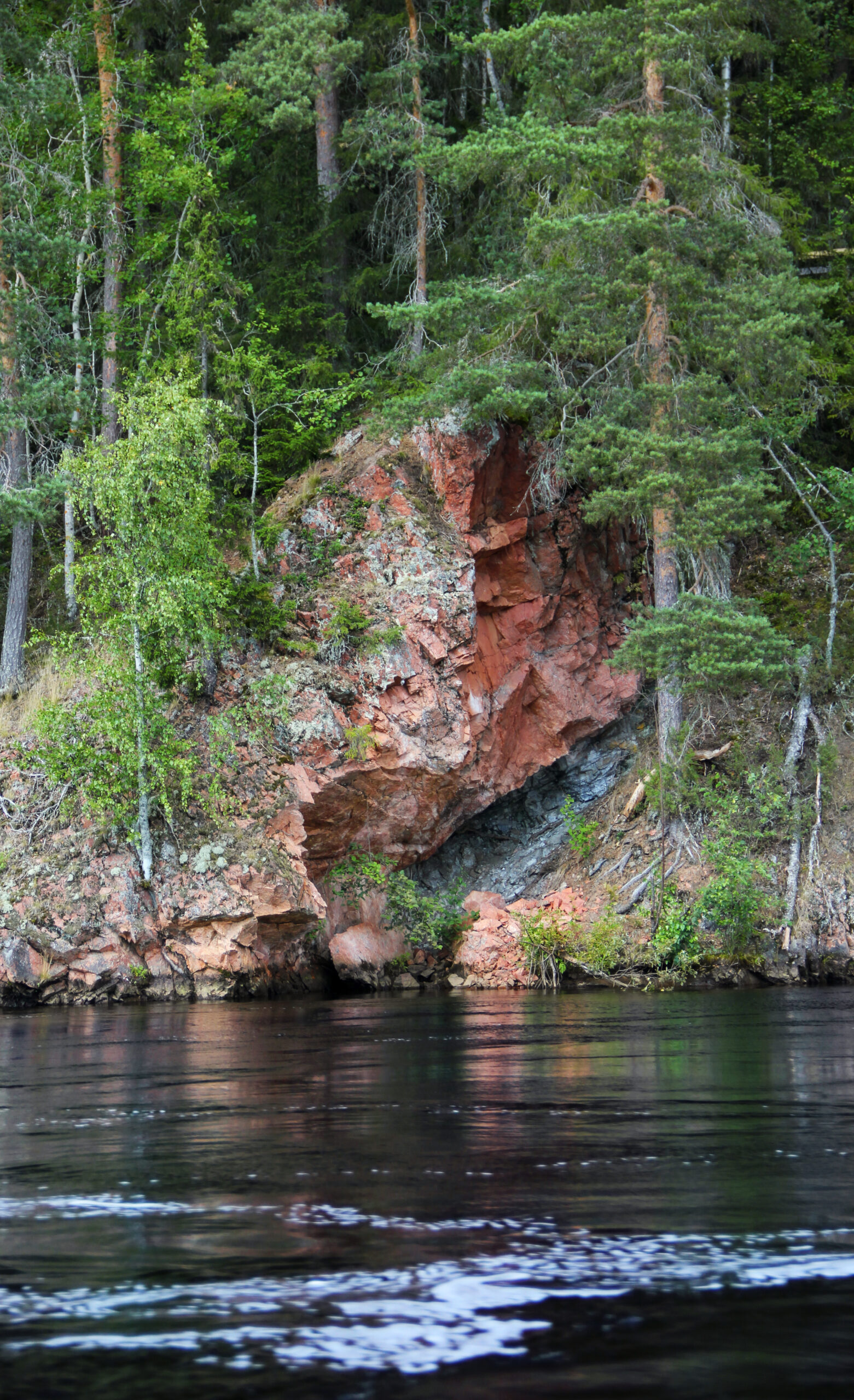The Formation of the Muhos Formation
The history of the formation began nearly two billion years ago, when tectonic plates collided and a massive mountain range rose on an ancient continent. Over time, glaciers, wind, and flowing water wore down the mountains. Over hundreds of millions of years, the range was reduced to a nearly flat plain. As a result, rocks formed deep within the mountain range, such as granite, were eventually exposed at the Earth’s surface.
When tectonic stresses in the bedrock were released, the bedrock in the northwestern part of the Oulujoki River Valley began to subside. This so-called graben (rift valley) formed a sea bay that stretched from Muhos to Hailuoto. Rivers began to deposit gravel, sand, and clay into this basin. Over hundreds of millions of years, the depression filled up, and the layers of sediment hardened into rock—sometimes hundreds of meters thick—lying above the granite bedrock.
The graben was only discovered in the 1930s, during preparations for constructing hydropower plants on the Oulujoki. The only place where the hardened gravel of the Muhos Formation can be seen at the surface is along the Lemmenpolku nature trail in the village of Kiekki in Muhos. Due to an exposure of the formation’s lowest layer—known as conglomerate—the shoreline rock is protected under Finland’s nature conservation law. In the landscape, the edge of the formation appears as a distinct step where the granite bedrock plunges deep beneath the surface.

